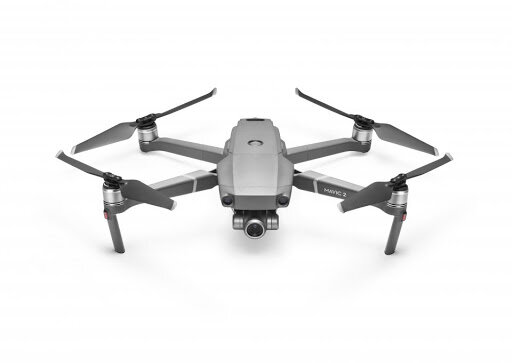In this article, we discuss the best drones for construction, cinematography, and more.
For all intents and purposes, we will only discuss professional drones with 4k quality cameras and multirotors (aka multiple, helicopter-like blades). We will not discuss any fixed-wing (think airplane-esque) crafts.
With that out of the way, let us begin.
The DJI Phantom 4 Professional:
*Please note the Phantom 4 Pro is no longer in production. However, the Phantom 4 Pro V2.0 is and both versions are very similar*
The Phantom 4 Pro can be used for a variety of tasks. It is a fantastic drone for cinematography as well as aerial mapping. Indeed, Global Air Media has used this drone on four continents for a variety of projects--from drone surveying at golf courses in Baltimore (you can read more about one GAM experience here) to disaster relief in Bangladesh.
Beyond its range of abilities, the drone is extremely practical. Its size and weight specs--the drone has a diagonal measurement of just under 14 inches and weighs a bit over three pounds--mean that the drone easy to transport regardless of if your attempting to do drone videography in the mountains or use for roof surveying three towns over (if you want to know more on the connection between unmanned aerial services and roofs, here is a different article for you). Also, its compact structure allows it to hold up in the wind, so you do not need to delay your task because the weather is less than perfect.
Furthermore, the Phantom 4 Pro is an economically-savvy drone that does not cause too many problems. The drone comes fully assembled and the purchaser simply needs to purchase a holding case and extra batteries. Once all the pieces are together, the drone can cover a lot of ground in a short period of time. Indeed, in sport mode, the drone can exceed speeds of 50 mph. When its speed is coupled with the fact that it has a maximum flight time of 30 minutes, the Phantom 4 Pro is clearly a drone of great potential.
Additionally, while the $1,599 price tag may seem like alot of money, it is not considering all the tasks the drone can accomplish--and the fact that other construction drones can cost over $5,000. These factors are echoed in long-time drone flyer and Global Air Media Co-founder Austin Brown’s description of the drone, “for construction purposes, the cost effectiveness of this drone makes it an easy entry into the professional drone market.”
In terms of flaws, there are only two that Global Air Media has noticed: the payload system and the inability to easily change cameras for better quality shots. A payload system, for those who may not know, refers to the amount of weight a drone can carry. The Phantom 4 Pro can only carry about a pound before the drone becomes hindered.
However, considering this drone was designed for tasks like drone inspection services and drone videography/photography, this fault makes sense. There is no such thing as a multi-purpose drone that can do everything (indeed, that is part of the reason for this article). Meanwhile, while it should be acknowledged that the Phantom 4 Pro makes it hard to change cameras for better quality shots, it should also be understood that the drone’s original camera has 4k video quality and can capture images up to 20 megapixels, which is considered a high quality shot.
If you want to know more about the Phantom 4 Pro V2.0--including in-depth specs--feel free to go to the DJI website page on the drone, which I have placed here for your convenience.
The DJI Mavic 2 Pro:
When asked about the Mavic 2, co-founder Austin Brown begins, “the mavic is the most popular drone on the market currently for a reason. This drone packs a lot of power into a very compact frame.” Priced at a reasonable $1,599 given its capabilities, the Mavic 2 Pro has a 4k camera like the Phantom 4 Pro but a much better gimbal, which helps to stabilize it despite the motion or speed of the shot’s focus. While the well-designed gimbal assists with image stability, the drone’s structure allows it to fly steady, even in higher velocity winds. Indeed, DJI claims the drone has wind resistance up to 24mph.
Stability is not the only thing the Mavrik 2 Pro is good for, however. Its size and weight--the Mavic 2 Pro comes in at 2 pounds and is under 14 inches diagonally when unfurled completely--allow the drone (when put into a protective case, of course) to fit safely and easily into a backpack, which is especially handy for videographers on the move. S
peaking of the more artistic uses of drones, it should be stated that the Mavic 2 Pro is better for drone cinematography than for mapping. However, when it comes to construction purposes, the Maric enterprise offers a better platform for capturing thermal imagery (as might be needed in roof inspections). When summing up his thoughts on this particular UAV, Austin Brown states, “this should be the top choice for anyone looking to dabble in the drone business on a more professional level.”
For specs and further information on the Mavic 2, you can go to the DJI website here.
The DJI Inspire 1 and 2:
The Inspire 1 was one of the first top-line drones Global Air Media used. The major pros of this model were its 20-25 minutes of battery life and its interchangeable payload system, which can carry up to 3 pounds with ease. Furthermore, the drone was great at capturing thermal imagery for GAM before the Mavic drones were produced as well as for inspecting dams and pipelines for leaks. However, the Inspire 1’s glory days are gone, and it has since been phased out of Global Air Media’s lineup for more recent drone technology (if you are really looking for an older, relatively-cheap drone, a quick google search will allow you to find a store that sells Inspire 1s, which are notably cheaper than the Inspire 2s).
[CAPTION, “An Inspire 2 Being Utilized for Aerial Surveying of a Construction Site”]
To use this UAV well for drone cinematography, one must shoot in 4k. However, this method produces some of the best film a drone can capture. Meanwhile, when it comes to aerial surveying, this drone is decent. However, it is much better with the close, horizontal cousin of aerial mapping: real estate drone photography. Indeed, Austin Brown emphasizes this point, “your client is guaranteed to love the depth of the shots produced by this drone.” This rather-large drone, like any, has its areas of expertise. Overall, it may be the ideal drone for you--it is just a matter of what you want it for.
Speaking of want, if you want more specifics on the Inspire 1, click here. If you want more on the Inspire 2, click here.
No matter what drone you decide on, we hope Global Air Media’s insight brings you just a bit more clarity during your hunt for the drone you need.
---
This post was written by Elisabeth Buscemi, a Writing Seminars major at Johns Hopkins University.



![[CAPTION, “An Inspire 2 Being Utilized for Aerial Surveying of a Construction Site”]](https://images.squarespace-cdn.com/content/v1/56383553e4b041ec7db1ed3e/1597115709016-M0FPOYWUZVTUZGJ9721C/Construction_Drone.jpg)







